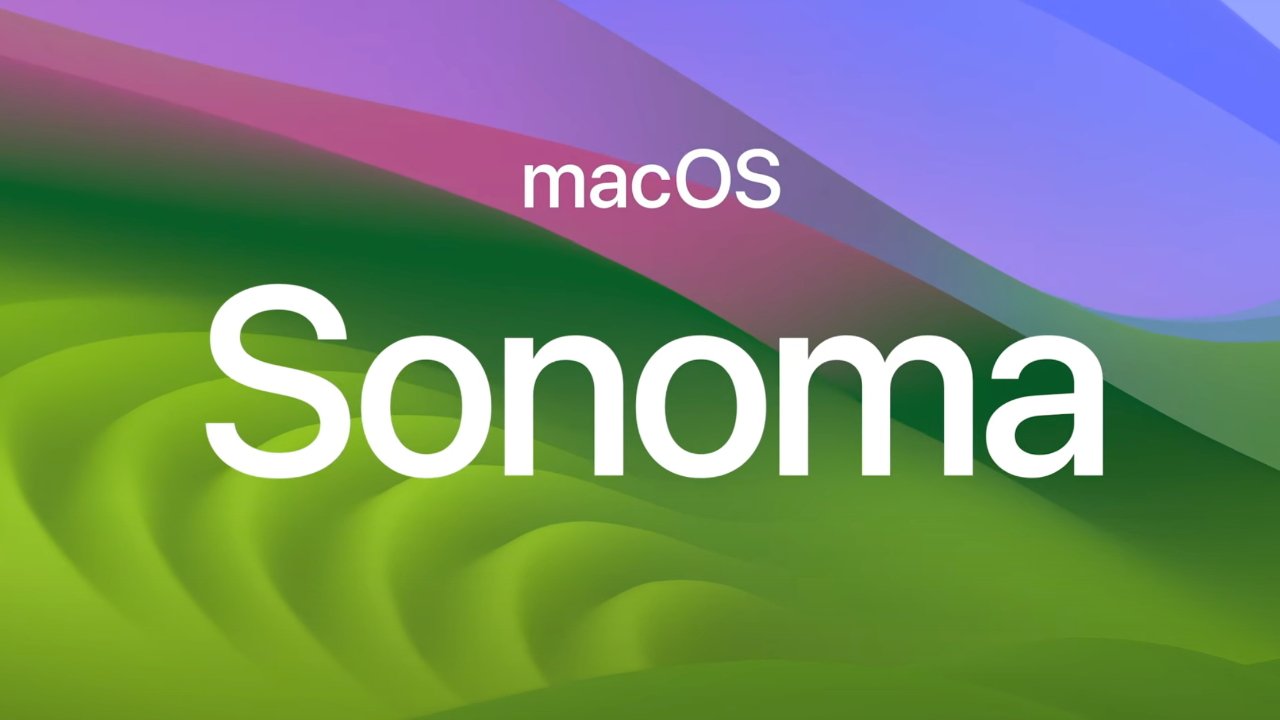Apple's new macOS 14.5 update is out but brings only bug fixes
Apple has released macOS Sonoma 14.5, but it comes with very few visible updates.

Following a round of beta test releases, which began in early April 2024, Apple has now publicly released macOS 14.5. AppleInsider always recommends waiting at least a few days before updating, to give time for other users to discover bugs -- as they did with macOS 14.4.
After that, it's best to install the new version in order to be sure of having the latest security updates.
As with that last macOS 14.4 update, though, there are close to no visible differences in the new version. While macOS Sonoma 14.4 added new emoji, Apple has said only that this macOS 14.5 has bug fixes.
Specifically, certain FaceTime users have been unable to answer or reject a call. It was to do with notifications not displaying the Accept or Decline buttons, and this has been fixed.
It's not known how many users were affected by that FaceTime bug, but it wasn't enough or sufficiently widespread to have been independently reported. Even so, the second bug fixed in macOS 14.5 unquestionably affected fewer users still.
Those users have to have been iPadOS developers electing to make a Mac version of their app. Under certain circumstances that Apple does not detail, when a user double-clicked to launch what's known as a "Mac (Designed for iPad) app," it could open the wrong app.
This, too, has reportedly been fixed in the new release.
Apple's free macOS Sonoma 14.5 update is now rolling out across the world, and will generally come pre-installed on new Macs. Existing Mac users will be prompted to update at some point, but can also elect to initiate the download sooner by going to System Settings, General, and Software Update.
Alongside the macOS Sonoma update are updates for Monterey, Ventura and Sonoma. Monterey gets an update to version 12.7.5, Ventura has been updated to 13.6.7, and Sonoma is now version 14.5.
Read on AppleInsider

Comments
Yes, when it replaces existing files of that size.
I miss my Mac SE with its 20MB hard drive.
I miss my Mac Plus - 1.44k floppies , yes two. One for the OS and one for the Apps !
I personally think Apple has been pushing a bit too hard on the new features front, as evidenced by the last few major macOS releases going out the door with a number of Big-Wow WWDC features being missing from the initial release. Some end up straggling along to nearly the halfway point of the major release cycle, or longer. Pre announcing a bunch of new features and having some of them delayed for a long time puts a lot of pressure on the development team to work on those features that have already been promised at a time when they're starting to get feedback and bug reports from the release that did go out the door.
Not setting expectations appropriately sucks for everyone involved, from the development team, to partners, and to end customers who are sometimes waiting not so patiently for what was promised and didn't get delivered. I've never been a fan of "Coming Soon" promises. I'd actually prefer that the features that are in danger of not making the first cut be held back from announcement. When they do get finished, surprise me with an unexpected bonus in mid-cycle. But that's not the hype-based model that marketing and project management seems incapable of leaving behind, along with its trail of disappointed customers and burned out developers.
This year is different. I will upgrade my Apple devices to their current operating system versions in June during the week before WWDC. That pretty much ensures that version of the operating system code is mature and won't be receiving anything more than bug fixes and security patches.
So yes, I have a couple of iPhones running iOS 16, an iPad mini running iPadOS 16 and my Mac mini on Sonoma. So the day I upgrade I don't really suffer from all annoying bugs that the average Apple user sees if they are installing updates shortly after they are available. For me this is a much more pleasant user experience, much less frustration.
There was one exception. I ran Mojave for over 20 months, skipped Crapalina, and went directly to Big Sur. I installed Crapalina several times on test drives and walked away unimpressed each time. So I never ran Crapalina as a daily operating system. Downgrading an iOS installation is very difficult so I really need to be convinced that the upgrade will produce a better user experience.
I'm wavering on iOS 17 at this point. Is this the year I skip an iOS upgrade? The only problem is a lot of developers only writing code for the last couple generations of iOS...
I love how this is given a subliminal negative connotation when in fact this is SO needed and actually a VERY positive thing! Not EVERY release has to focus on NEW NEW NEW!!!
COMPLEXITY.
only??
Fixing bugs is the only thing Apple should to do for the next 6 months.
There are basic bugs from Ventura still in Sonoma, and summing up new ones.